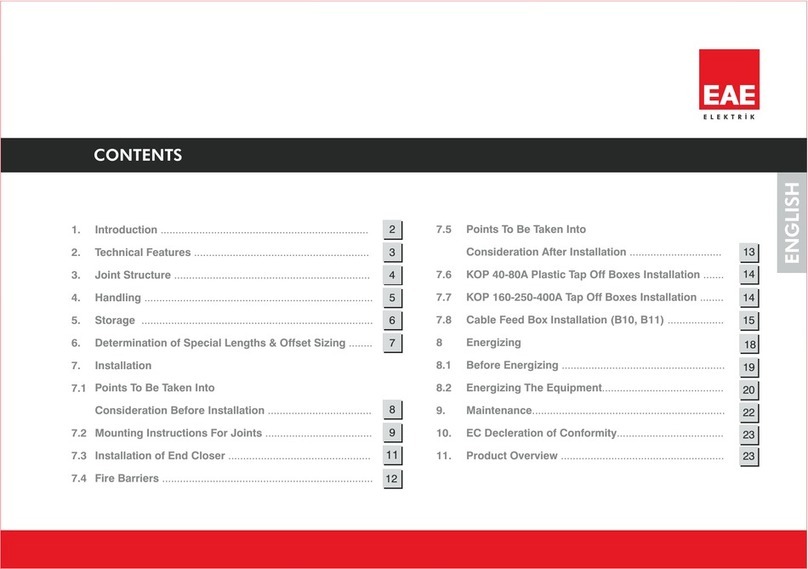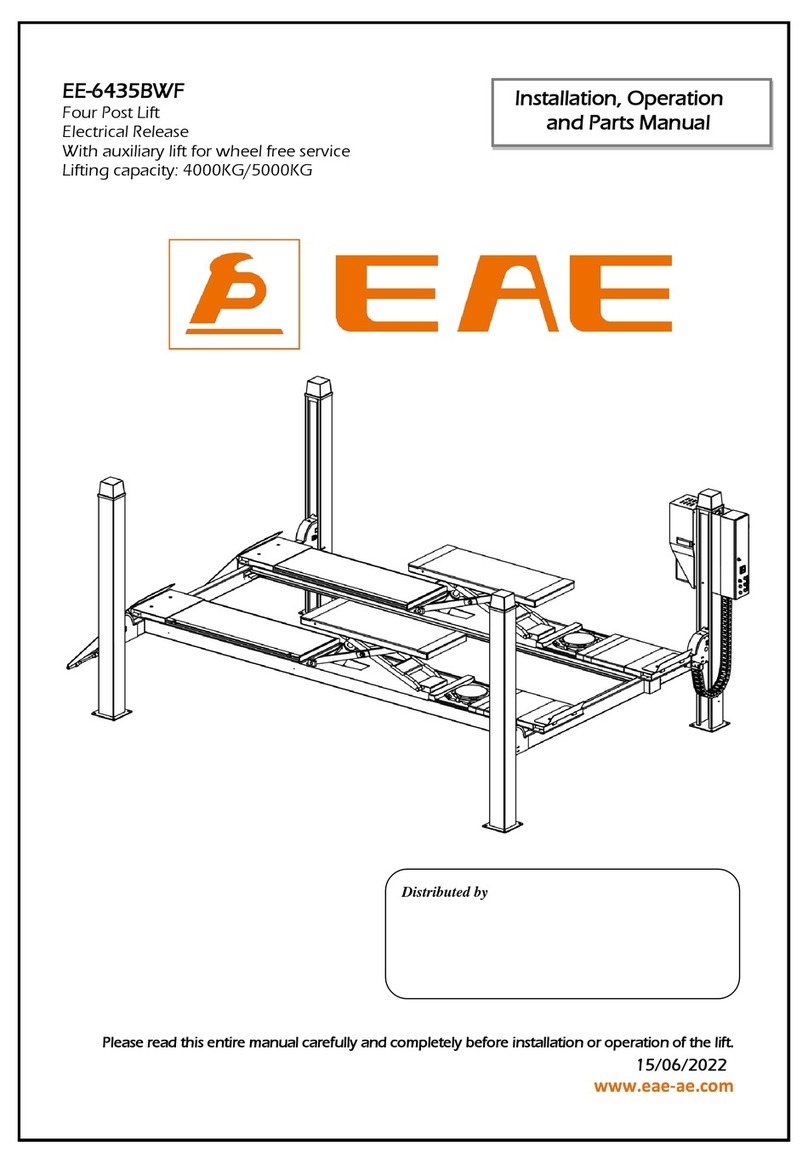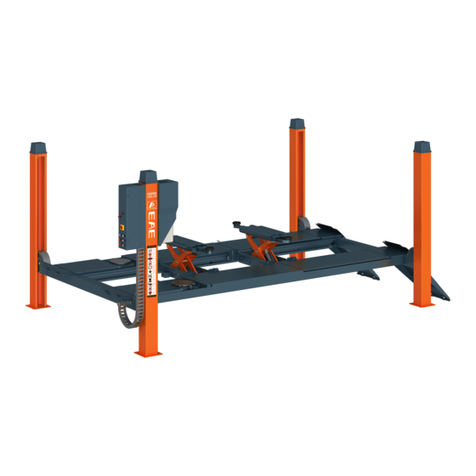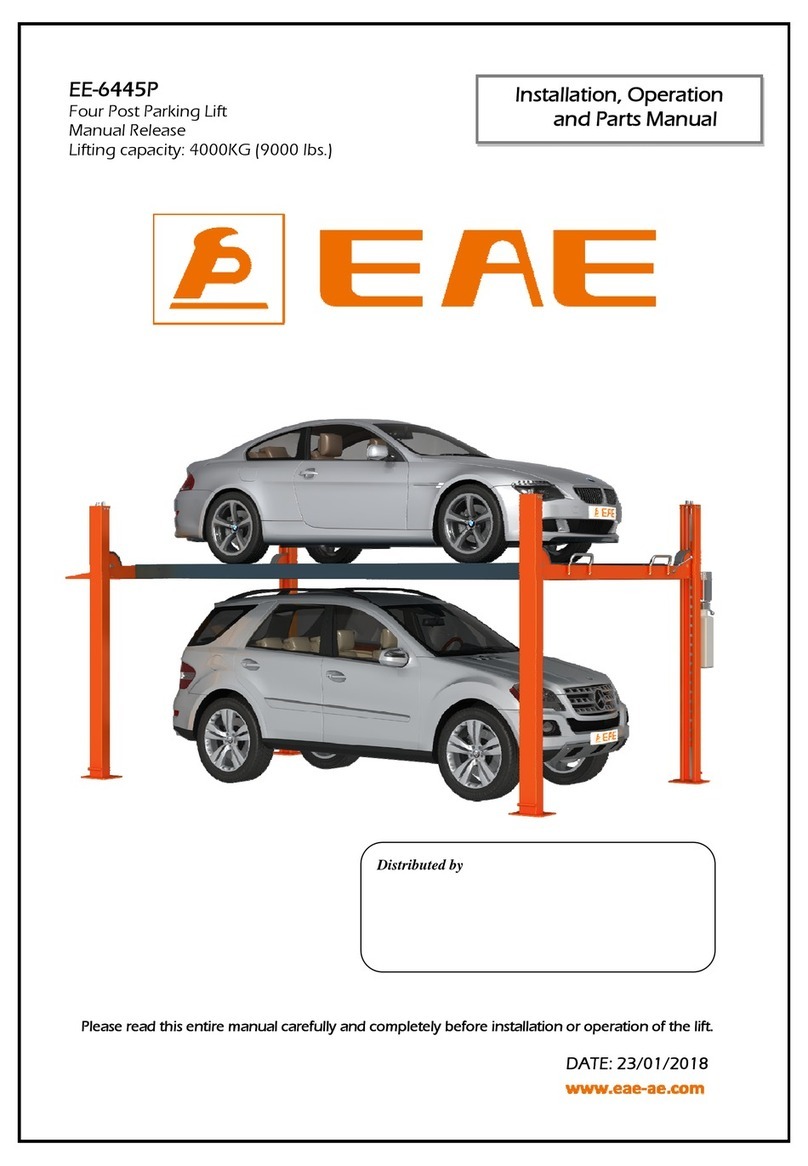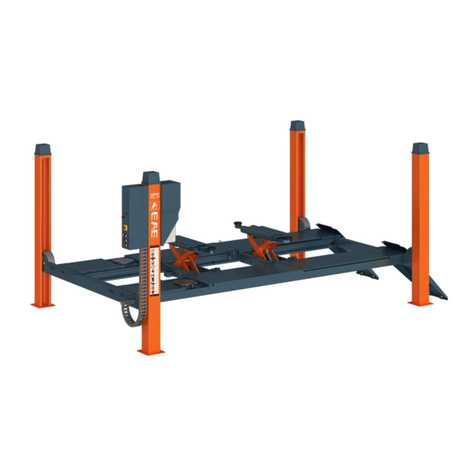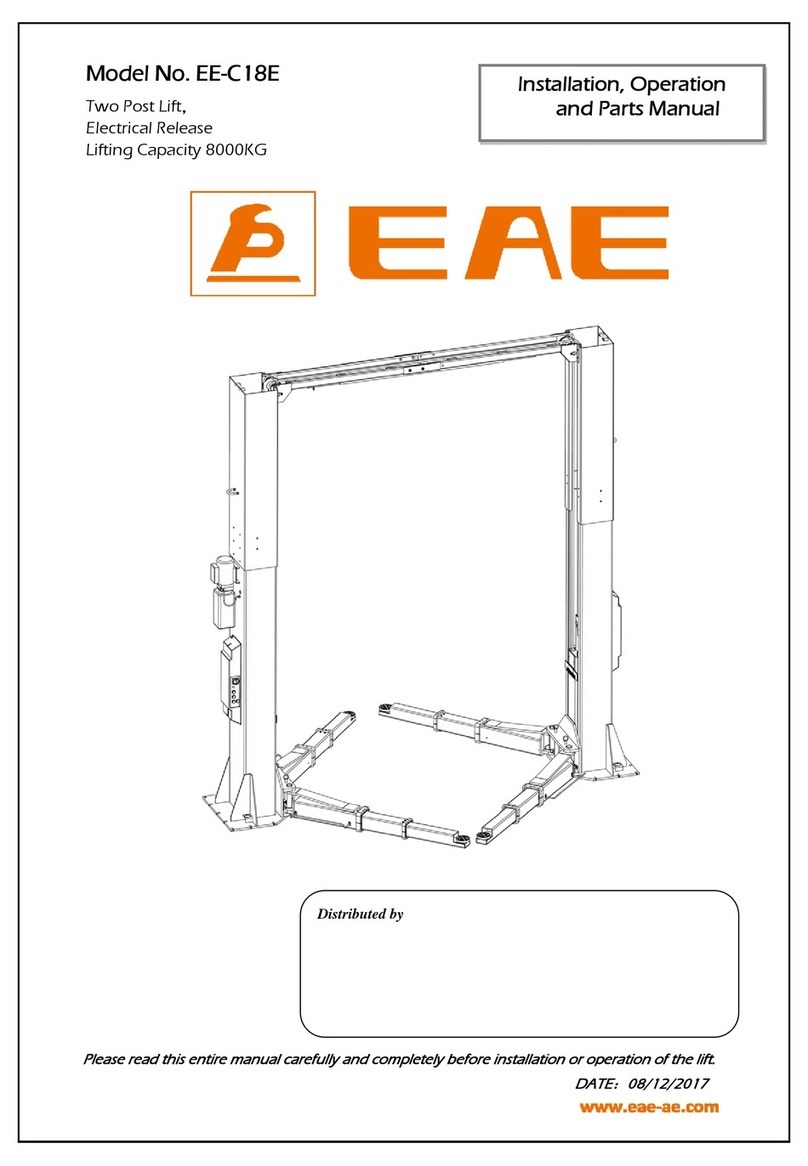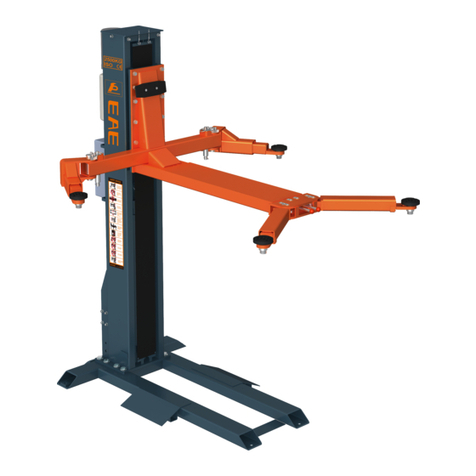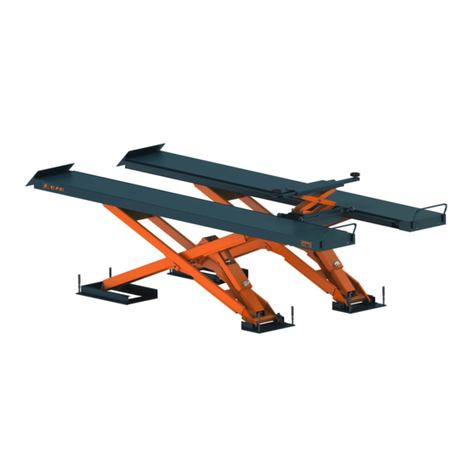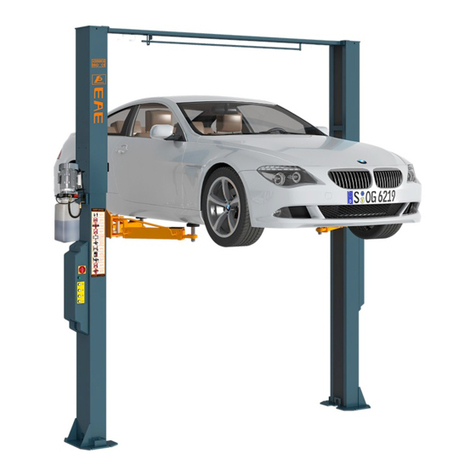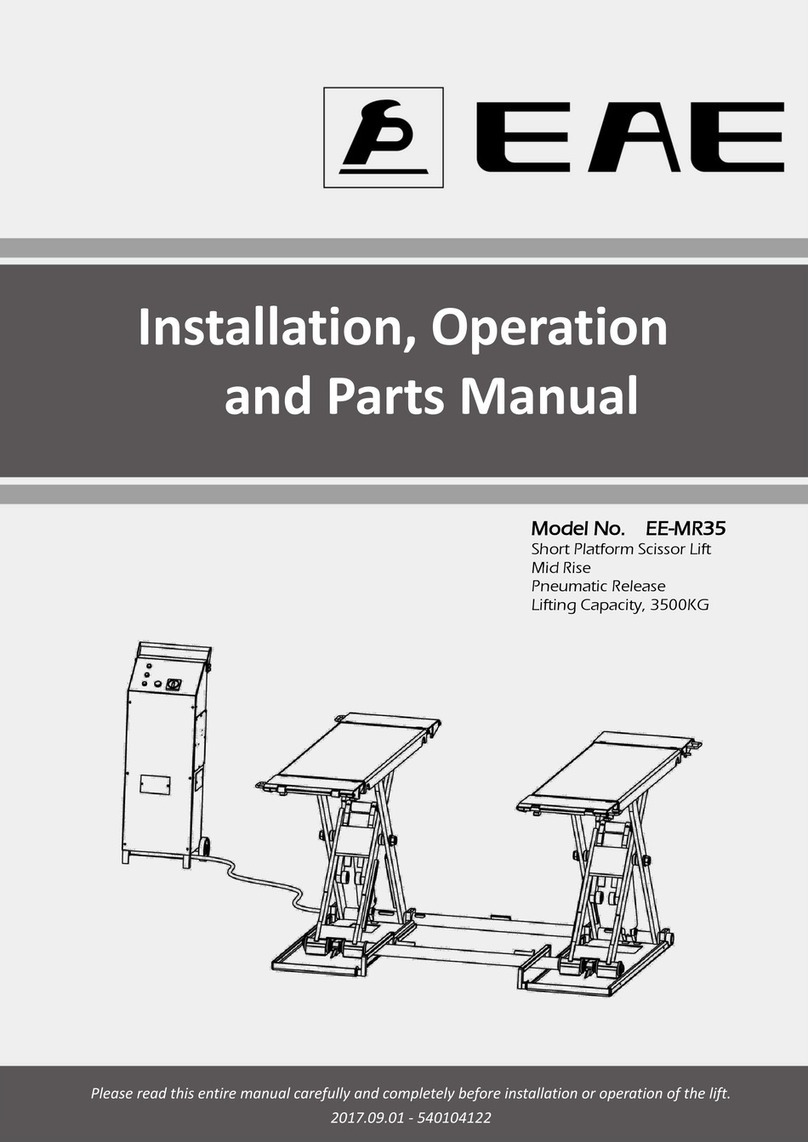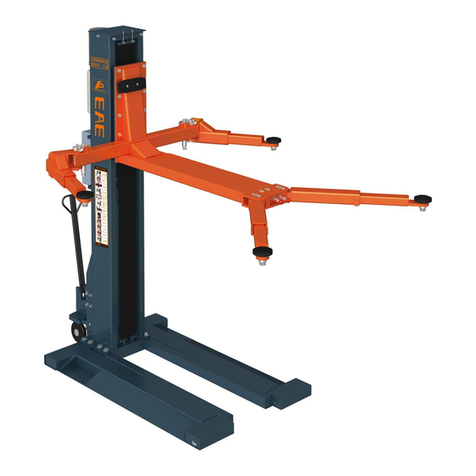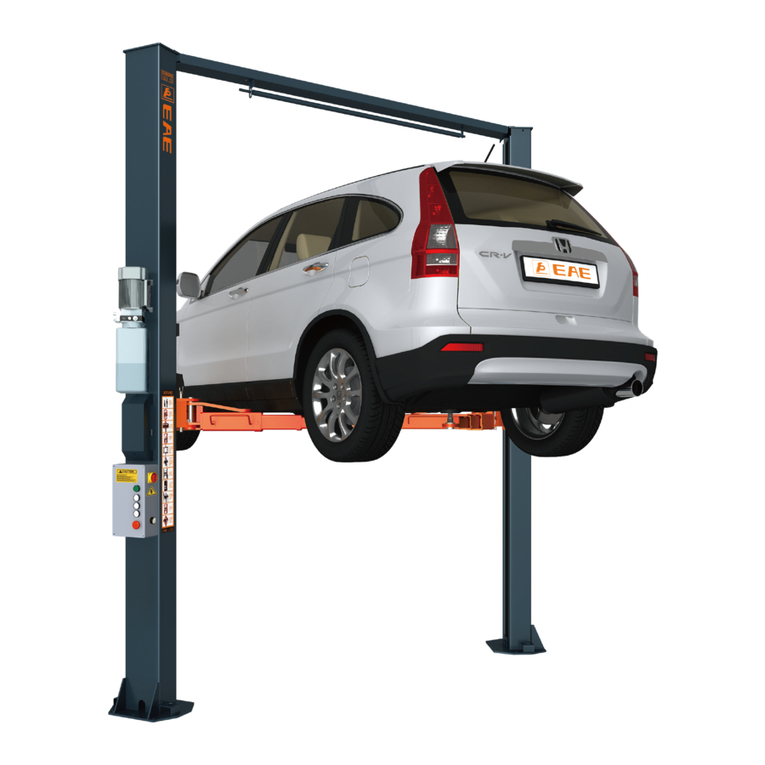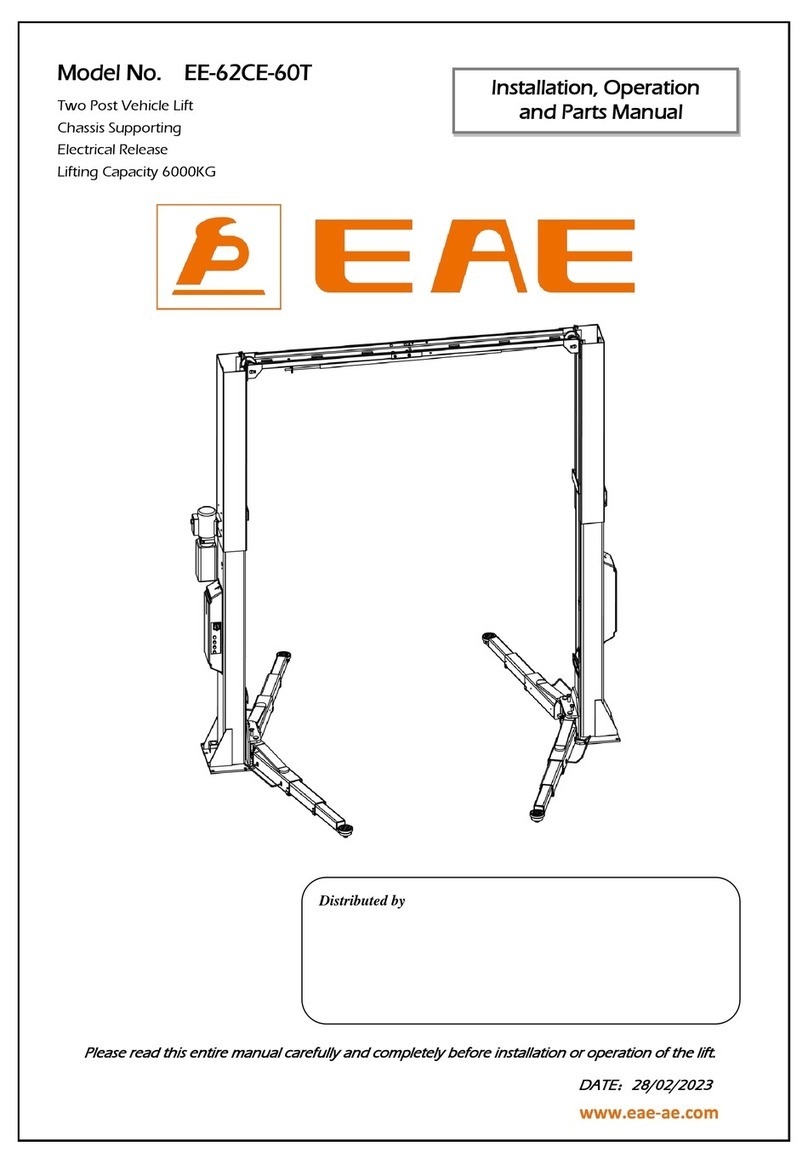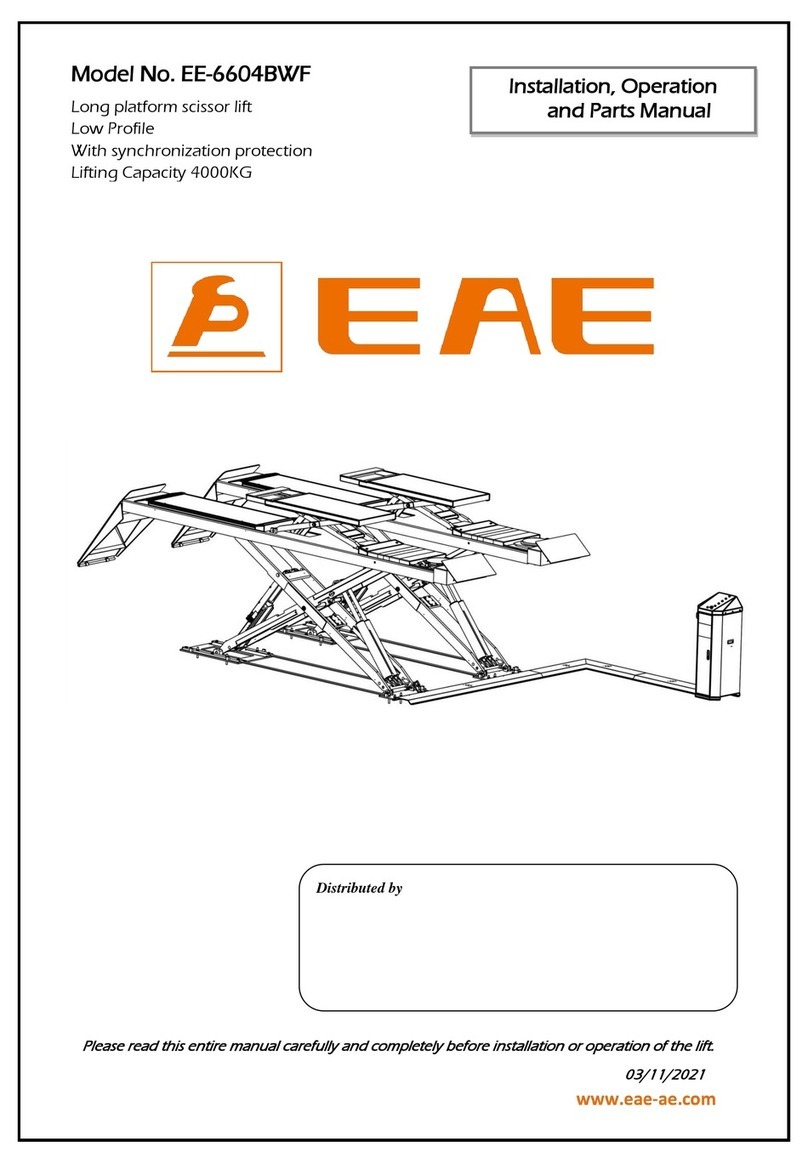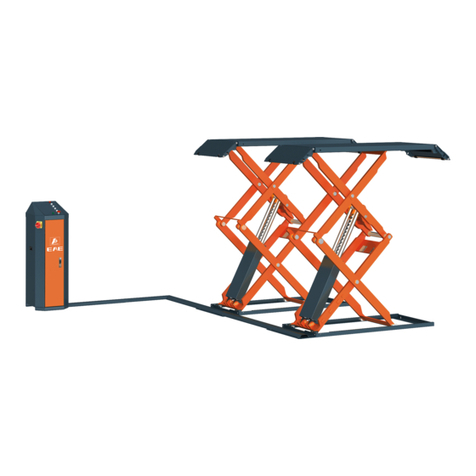
Installation, Operation and Parts Manual
EE-6435B.WF
SAFETY NOTES ........................................................................................................................................ 4
1.1 Operation of lifting platforms ......................................................................................................................4
1.2 Checking of the lifting platforms .................................................................................................................4
1.3 Important safety notices ..............................................................................................................................5
1.4 Safety advices...............................................................................................................................................6
1.5 Risks and safety instructions........................................................................................................................7
1.6 Noise level....................................................................................................................................................9
PACKING, STORAGE AND TRANSPORTATION......................................................................................... 10
2.1 The lift was dismantled into the following2 parts for transportation.......................................................10
2.2 Storage .......................................................................................................................................................10
2.3 Lifting and handling....................................................................................................................................10
PRODUCTS DESCRIPTIONS .................................................................................................................... 11
3.1 General descriptions ..................................................................................................................................11
3.2 Construction of the lift...............................................................................................................................11
3.3 Dimensions.................................................................................................................................................12
3.4 Safety devices descriptions ........................................................................................................................13
3.5 Technical data ............................................................................................................................................14
3.6 Nameplate..................................................................................................................................................14
INSTALLATION INSTRUCTIONS .............................................................................................................. 15
4.1 Preparations before installation ................................................................................................................15
4.2 Installation attentions................................................................................................................................18
4.3 General installation steps ..........................................................................................................................18
4.4. Items to be checked after installation ......................................................................................................23
OPERATION INSTRUCTIONS .................................................................................................................. 23
5.1 Precautions ................................................................................................................................................23
5.2 Descriptions of control panel.....................................................................................................................24
5.3 Flow chart for operation ............................................................................................................................25
5.4 Operation instructions ...............................................................................................................................25
5.5 Emergency lowering in case of no power..................................................................................................26
TROUBLE SHOOTING............................................................................................................................. 27
MAINTENANCE ..................................................................................................................................... 28
ANNEX ................................................................................................................................................. 29
Annex1, Steel cable connection.......................................................................................................................29
Annex2, Hydraulic schemes and parts list .......................................................................................................30
Annex3, Electrical schemes and parts list........................................................................................................33
Annex4, Exploded drawings and parts list.......................................................................................................37














